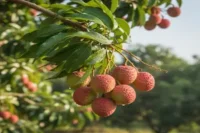Unveiling the Beauty: Understanding the Process of Broccoli Plant Flowering
Published: 12 Jun 2024
The flowering stage of a broccoli plant typically occurs 90-120 days after planting. During this time, the plant will produce floret clusters that resemble a single flower. Broccoli is a member of the Brassica family. It is a nutrient-packed vegetable and a plant with a captivating developmental journey.
This article aims to share the knowledge I’ve gained about the broccoli plant flowering process. I’ll delve into the life cycle of the broccoli plant, the factors that influence its flowering, and the stages it goes through before it blooms. Understanding these aspects can enhance our appreciation for this vegetable and improve our gardening practices.
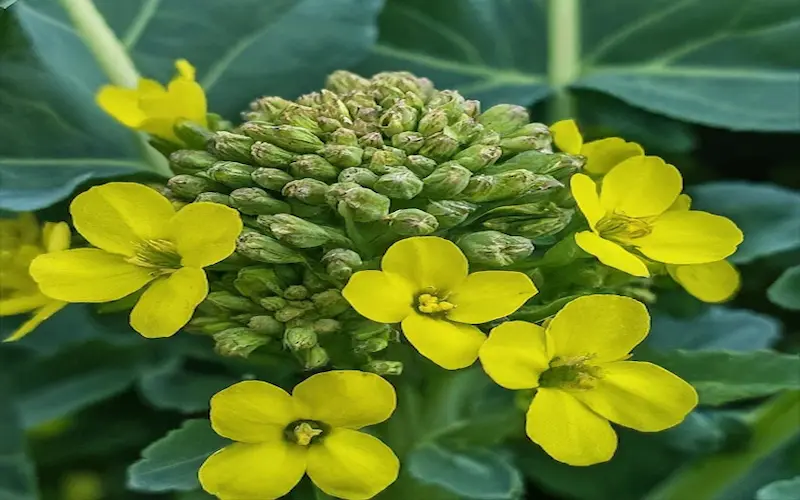
The Life Cycle of a Broccoli Plant
The journey of the broccoli plant begins with a seed, a tiny encapsulation of potential. As I sow these seeds into the fertile soil, I am filled with anticipation for the stages that lie ahead. The first stage, germination, is a thrilling moment as the seeds sprout and tiny seedlings make their appearance. These seedlings are nurtured with care, receiving adequate water, light, and nutrients, setting the stage for robust growth.
As the seedlings mature, they enter the vegetative stage. Here, the broccoli plants focus on developing a strong root system and lush foliage. This stage is vital for the accumulation of resources that will support flowering later on. I watch eagerly as the plants grow taller and the leaves expand, capturing the sun’s energy through photosynthesis. This buildup is a precursor to the forthcoming reproductive phase, which will showcase the beauty of broccoli flowers.
Transitioning from the vegetative to the reproductive stage is a critical shift in the life cycle of a broccoli plant. It is during this phase that the plant prepares to produce flowers. The transition is marked by changes in the plant’s physiology and is influenced by factors such as temperature and daylight hours. As a gardener, I must be attuned to these changes to ensure the plant’s energy is directed towards flowering when the time is right.
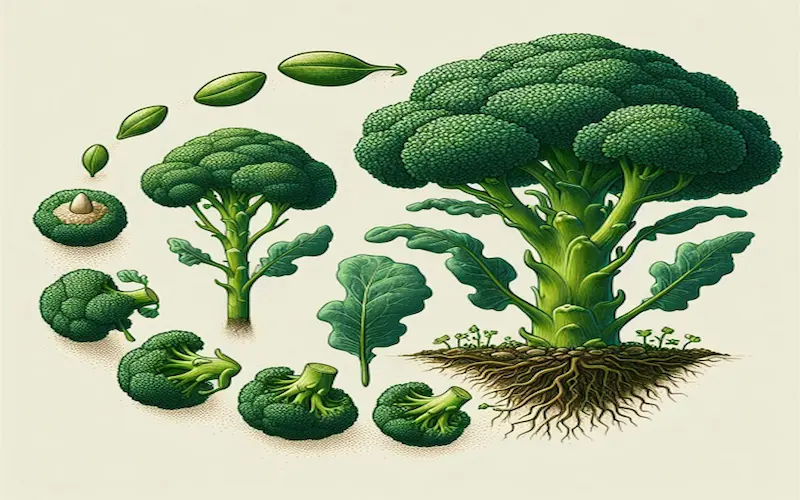
Factors Influencing Broccoli Plant Flowering
Broccoli plant flowering is not a spontaneous event; several factors influence it, each playing a pivotal role in the timing and success of the bloom. Temperature is one such factor that can significantly affect the flowering process. Broccoli plants prefer cooler temperatures for optimal growth and flowering, and excessive heat can lead to premature bolting, where the plant flowers too quickly, reducing the quality of the harvest.
Length, or photoperiod, is another factor that influences the flowering of broccoli plants. These plants typically require longer nights to initiate the flowering process, a phenomenon known as “vernalization.” During this process, the plant must be exposed to cooler temperatures for a certain period to trigger the development of flower buds.
Nutrient availability in the soil is also a key factor that affects the flowering of broccoli plants. A balanced supply of essential nutrients, particularly nitrogen, phosphorus, and potassium, supports healthy growth and encourages the plant to flower. As a diligent gardener, I regularly test the soil and provide organic fertilizers to maintain optimal nutrient levels for my broccoli plants.
Understanding the Flowering Stages of Broccoli Plant
The stages of broccoli plant flowering are a wonder to behold. It begins with the development of flower buds, which are initially small and green, nestled among the leaves. As a keen observer, I notice these buds gradually enlarging and taking on a more defined shape. This is an indication that the plant is entering the pre-flowering stage, and the actual blooming is just around the corner.
The next stage is the flowering stage itself, where the buds open to reveal the broccoli’s yellow flowers. This is a critical period for pollination, which can be carried out by wind or insects. The open flowers are a magnet for bees and other pollinators. I often find myself watching these tiny creatures at work, ensuring the future generation of broccoli plants through their tireless efforts.
Following pollination, the flowers begin to fade, and the plant focuses on seed production. The seeds develop within the green pods that once held the flowers. It’s a time of transformation as the energy of the plant shifts once again, this time towards ensuring its legacy through its seeds. As a grower, it’s a bittersweet moment to witness the end of the flowering phase, but also a time of anticipation for the seeds that will bring forth new life.
Signs of Broccoli Plant Flowering
Identifying the signs of broccoli plant flowering is essential for a timely harvest. One of the first indications is the appearance of the flower buds, which signal the onset of the flowering stage. As these buds grow and change in texture, I can almost predict the exact timing of when the flowers will burst forth.
Another sign of impending flowering is the change in plant structure. The central stem of the broccoli plant elongates, and the leaves around the buds become more compact. This structural change is a clear message from the plant that its energy is now focused on reproduction, and the flowering phase is imminent.
The color of the buds is also a telltale sign. As they transition from a deep green to a lighter shade, possibly with hints of yellow, it is a visual cue that the buds are maturing and the flowers will soon open. This color change is my cue to prepare for the harvest if I wish to gather the broccoli heads before the flowers open.
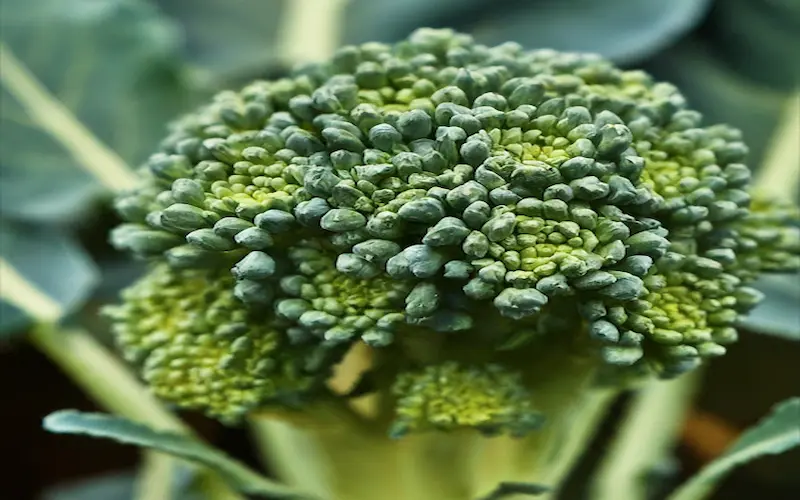
How to Encourage Broccoli Plant Flowering
Encouraging broccoli plant flowering requires a blend of patience and proactive gardening. One of the first steps is to select the right variety of broccoli that is suited to the local climate and growing conditions. I have experimented with different varieties to find those that perform best in my garden, factoring in the length of the growing season and temperature patterns.
Providing consistent and adequate care throughout the plant’s life is also crucial. This includes regular watering, ensuring the soil remains moist but not soggy. I also incorporate a balanced fertilizer regimen to supply the necessary nutrients without overfeeding, which can delay flowering.
Another method to encourage flowering is to manage the temperature around the plants. Since broccoli thrives in cooler conditions, it may be necessary to provide shade during hotter periods or utilize techniques such as mulching to keep the soil temperature down. These strategies have been instrumental in promoting the timely flowering of my broccoli plants.
Common Issues with Broccoli Plant Flowering
Even with the best care, issues can arise during the broccoli plant flowering process. Bolting is a common problem, where the plant flowers prematurely due to stress, often from high temperatures or drought. This results in smaller, less desirable flower heads. To combat this, I monitor the weather closely and provide extra water or shade as needed to keep the plants cool and stress-free.
Another issue is the lack of flowering, which can be frustrating after nurturing the plants for weeks. This can be caused by insufficient cold exposure during the vernalization process or a nutrient imbalance in the soil. Addressing these issues may require adjusting planting schedules to ensure appropriate temperature exposure and conducting soil tests to correct any nutrient deficiencies.
Pests and diseases can also impact the flowering of broccoli plants. Pests like aphids and caterpillars can damage the buds, while diseases such as downy mildew can weaken the plant and affect its ability to flower. Vigilance and timely intervention with organic pest control methods have been key to preserving the health of my broccoli plants during the flowering stage.
Harvesting and Utilizing Broccoli Flowers
Harvesting broccoli flowers is a delicate task that requires timing and technique. The best time to harvest is when the buds are fully formed but before they open. I use a sharp knife to cut the main head, along with a portion of the stem, to encourage side shoots that will produce additional harvests.
Utilizing broccoli flowers can be as rewarding as growing them. The flowers are edible and have a mild, slightly peppery flavor. They can be used in salads, as garnishes, or even as a unique ingredient in stir-fries. I enjoy experimenting with broccoli flowers in my kitchen, creating dishes that highlight their fresh taste and nutritional benefits.
Apart from culinary uses, broccoli flowers can also be a beautiful and unexpected addition to flower arrangements. Their vibrant yellow color and distinctive shape can add a touch of edible elegance to any bouquet. This dual purpose of beauty and nutrition makes broccoli flowers a gem in both the garden and the home.
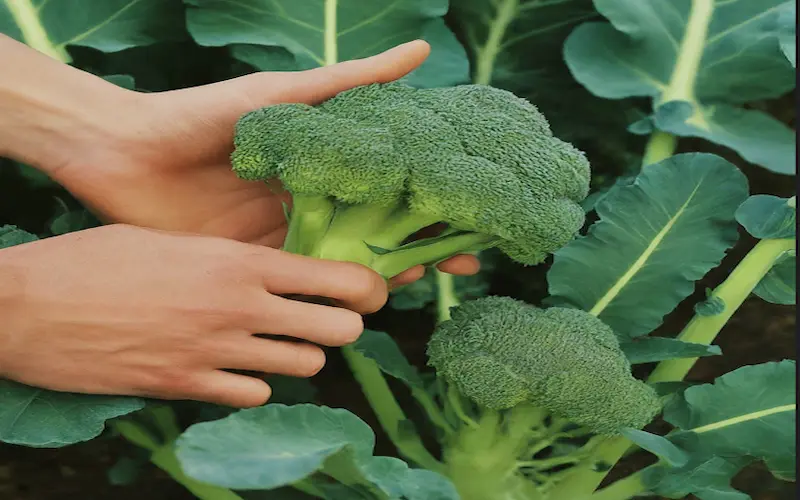
Broccoli Plant Flowering in Different Climates
Broccoli plant flowering is influenced by climate, and understanding this relationship is key to successful cultivation. In cooler climates, broccoli plants may flower more readily as the temperatures align with their preference for cooler weather. In these regions, I focus on selecting varieties with shorter growing seasons to ensure the plants have enough time to complete their life cycle before the onset of winter.
In warmer climates, the challenge is to prevent premature bolting due to heat. Planting early in the season or late summer for a fall harvest can help avoid the hottest temperatures. Using techniques such as shading and mulching to keep the soil cool can also make a significant difference in the success of broccoli plant flowering in these areas.
Regardless of the climate, understanding local weather patterns and adapting gardening practices to suit the environment is essential. By being flexible and observant, I’ve learned to grow healthy broccoli plants that flower beautifully, even in less-than-ideal conditions.
Conclusion
The process of broccoli plant flowering is a testament to the wonders of nature and the rewards of gardening. Through careful observation and nurturing, I have come to appreciate the delicate balance required for these plants to thrive and produce their stunning blooms. From selecting the right varieties to managing environmental factors and addressing common issues, each step in the process has taught me valuable lessons about plant care and resilience.
As I continue to cultivate broccoli in my garden, I cherish the moments of discovery and the simple joy of watching these plants transform from seed to flower. The beauty of broccoli plant flowering is not only in the vibrant yellow blooms but also in the journey that leads to them—a journey of growth, adaptation, and, ultimately, fruition.
For fellow gardeners and enthusiasts eager to experience the beauty of broccoli plant flowering, I encourage you to embark on this green adventure. With patience and dedication, you too can unveil the wonders hidden within the humble broccoli plant and delight in the blooms that signify the culmination of a plant’s life well-lived.
Thank you for joining me in exploring the fascinating process of broccoli plant flowering. May your gardens flourish and your harvests be bountiful. Happy gardening!

- Be Respectful
- Stay Relevant
- Stay Positive
- True Feedback
- Encourage Discussion
- Avoid Spamming
- No Fake News
- Don't Copy-Paste
- No Personal Attacks



- Be Respectful
- Stay Relevant
- Stay Positive
- True Feedback
- Encourage Discussion
- Avoid Spamming
- No Fake News
- Don't Copy-Paste
- No Personal Attacks

